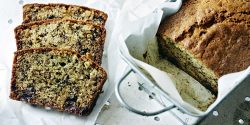
This is the traditional Bolognese ragu sauce recipe. Its the the traditional classic Bolognese ragout from Emilia-Romagna as registered by the Accademia Italiana della Cucina and on their website
Slow-cooked beef and pork, sweet carrots, and a gentle hint of wine. This creamy, richly coloured sauce clings to fresh tagliatelle and it must be tagliatelle pasta, delivering a taste of true Italian tradition in every bite.
25 mins
2–3 hrs
Serves 6
 This classic Bolognese ragout achieves a Nutri-Score of B, thanks to its balance of lean meats, a wealth of vegetables, and moderate fat. Its slow-cooked nature draws out deep flavour while keeping the dish nourishing and satisfying.
This classic Bolognese ragout achieves a Nutri-Score of B, thanks to its balance of lean meats, a wealth of vegetables, and moderate fat. Its slow-cooked nature draws out deep flavour while keeping the dish nourishing and satisfying.
Ingredients
- beef coarsely minced 400g
- fresh pork belly, sliced 150g
- onion ½, about 60g, finely chopped
- carrot 1, about 60g, finely chopped
- celery stick 1, about 60g, finely chopped
- red or white wine 1 glass
- tomato purée 200g
- double concentrated tomato paste 1 tbsp
- whole milk 1 glass (optional)
- light meat or vegetable broth as needed (or stock cube dissolved in water)
- extra virgin olive oil 3 tbsp
- salt and pepper to taste
- Dice the ingredients
Begin by finely dicing the pork belly, onion, carrot and celery. - Begin the soffritto
Set your heavy saucepan over medium-low heat. Add the pork belly and olive oil. Let the pork gently render, stirring with a wooden spoon, until it softens and releases its flavour. - Build the flavour base
Add the finely chopped onion, carrot, and celery to the pan. Cook slowly, stirring often, until the vegetables are soft and fragrant—take care not to let the onion brown or burn. - Add the meat
Raise the heat slightly, then add the coarsely minced beef. Stir well and cook for about 10 minutes, until the meat sizzles and loses its raw colour. - Deglaze and reduce
Pour in the wine and let it bubble away, stirring, until the liquid evaporates and the aroma of wine disappears. - Incorporate tomato and simmer
Add the tomato purée and tomato paste, then mix thoroughly. Pour in a cup of hot broth (or water if you prefer) and bring to a gentle simmer. Cover and cook on low heat for 2–3 hours, stirring occasionally. Add more hot broth as needed to keep the ragout moist and creamy. - Add milk (optional) and finish
Halfway through cooking, pour in the milk if using. Let it reduce fully into the sauce, which helps mellow the acidity and enrich the texture. - Season and serve
Once the ragout is thick, creamy, and a deep orange colour, season with salt and pepper to taste. Serve tossed with fresh pasta or use as a base for lasagne.
Additional Notes
For extra depth, try enriching your ragout with a little nutmeg, or add chicken livers, sausage, or blanched peas near the end of cooking. Always chop your vegetables by hand for the best texture.
Suggested Wine Pairing
Majestic: Villa Borghetti Valpolicella Ripasso
This Valpolicella Ripasso offers vibrant cherry and plum notes, with a touch of spice and soft tannins. Its lively acidity cuts through the richness of the classic Bolognese ragout, enhancing the sauce’s depth and balancing the creamy texture.
Tesco: Finest Chianti Classico
Chianti Classico’s bright red fruit, herbal undertones, and refreshing acidity make it a textbook match for Bolognese ragout. The wine’s structure stands up to the slow-cooked meat, while its savoury notes echo the sauce’s traditional Italian roots.
Sainsbury’s: Taste the Difference Barbera d’Asti
Barbera d’Asti brings juicy berry flavours and a brisk acidity that lifts the ragout’s hearty, savoury profile. Its velvety texture and subtle spice pair beautifully with the sauce, making it a classic wine for Italian pasta dishes and ragù.
What can you serve with this
- Fresh tagliatelle – The wide ribbons hold the ragout perfectly, delivering the sauce’s creamy texture in every bite.
- Crusty Italian bread – Ideal for mopping up every last bit of ragout from your plate.
- Grated Parmigiano Reggiano – Adds a salty, nutty finish that enhances the ragout’s depth.
Nutri-score Health Check
The traditional Bolognese Ragu recipe earns a Nutri-Score of B, reflecting its balance of lean protein, vegetables, and moderate fat. The score is automatically calculated from the ingredients and is only a guide.
Positive Factors
- Beef and pork provide high-quality protein and important minerals.
- Carrot, celery, and onion add fibre, vitamins, and antioxidants.
- Olive oil delivers heart-healthy unsaturated fats.
- Milk (if used) contributes calcium and creaminess.
Negative Factors
- Pork belly increases saturated fat content.
- Salt and stock cube can raise sodium levels.
- Long simmering may concentrate fats if not skimmed.
This ragout is nourishing and balanced, especially when served with wholegrain pasta.



